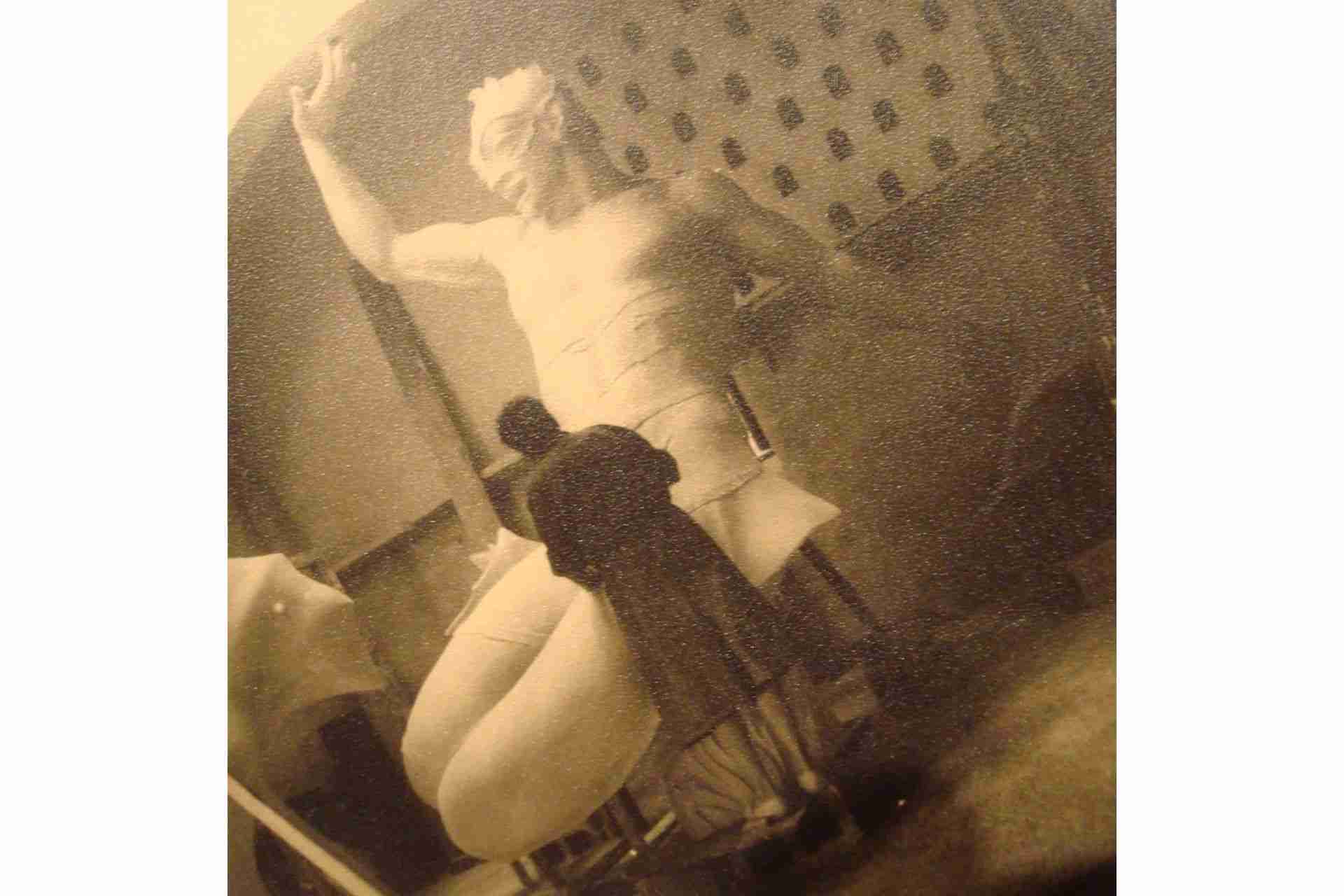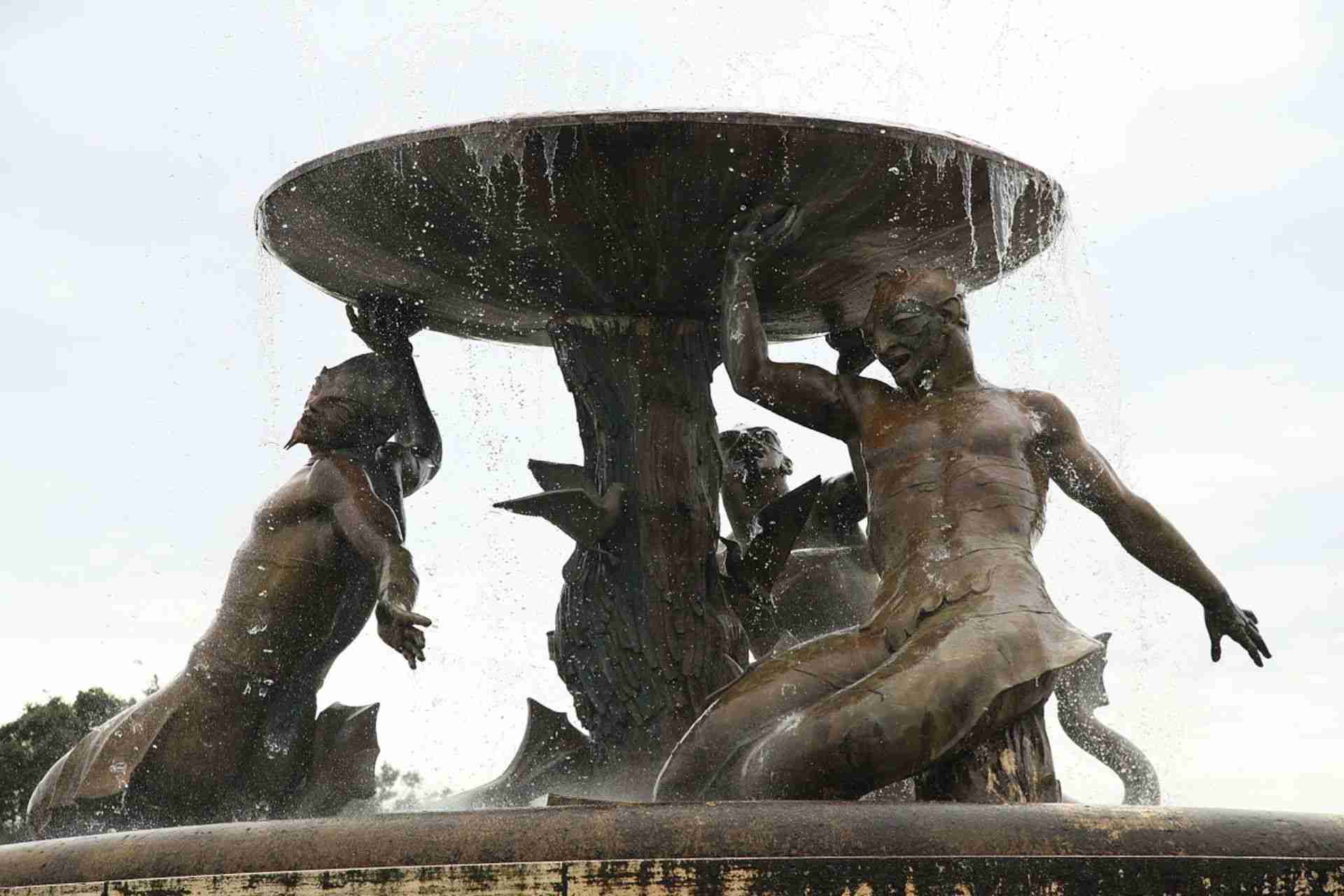The Triton Fountain: A Journey Towards Resurrection For Valletta's Grand Entrance
by Tiziana Micallef

The famous Valletta Bus Terminus has been featured on multiple postcards in gifts & souvenir shops or stationeries over the years. Although you might have noticed some changes, the one constant is the iconic Triton Fountain. Synonymous with Valletta, this monument fountain has reasserted its position as a dominant landmark just before entering the Capital.
Though it's not the oldest fountain in Valletta, and it does not branch out of Wignacourt's Aqueduct, its location has made it the most sought-after fountain by locals and tourists alike. Whether as a meeting point, for selfie sessions or to attend outdoor mass events, the Triton Fountain is a major spotlight. From its architectural origins to its cultural importance and the elevated status it has given to Pjazza Tritoni in recent years after extensive restoration, this article will take you through a historical and significant journey.
Triton Fountain's Birth
The Triton Fountain was the result of a water fountain design competition launched in 1953 by the Ministry for Public Works and Reconstruction. This piece of art and architecture was intended to replace the Kingsgate Roundabout at Valletta's main entrance. Thus, embellishing the bus terminus site just before entering the capital city with a monument of great prestige that blended with the then Victorian-era Kingsgate.

Prominent sculptor Chevalier Vincent Apap (1909-2003), assisted by chief draughtsman Victor Anastasi (1913-2013) then Chief Draughtsman of the Public Works Department, presented the proposal Triton (nom-de-plum). It ended up claiming first prize in the competition "for its simplicity, effectiveness and artistic merit", according to the Board. While Apap worked on the fountain design of the three Tritons in stucco, Anastasi took care of the technical and architectural elements, which included the fountain's monumental architecture. He was also consulted on the civil, mechanical, and electrical engineering aspects.
A Symbolic Fountain's Design
When looking at the Triton Fountain, one can see three bronze Tritons, possibly inspired by the Fontana delle Tartarughe in Piazza Mattei and the Fontana delle Naiadi in Piazza della Repubblica, both in Rome. The gigantic bronze sculptural group cast in Naples consists of three mythological tritons holding a large 5m diameter basin, erected dead centre on four concentric ponds cast in concrete and clad in a staggering 730 tons of Roman travertine slabs quarried from the Montecatini quarries of Apuania in Carrara. While two of the mythological Tritons are sitting, the third is kneeling—all three are balanced on a seaweed base. A remarkable detail in the fountain's design is that each of the Triton's faces is visible when looking at the fountain from the City Gate.
The strong connection of Malta to the sea is represented in the Tritons' figures, while the sense of strength and movement comes from the figures' posture and the design of the water jets, respectively. In other words, each element contributes to that sense of splendour and monumentality.

From design to construction, the Triton Fountain was followed by no less than three governing bodies - the Coalition Government between the PN and MWP, the MLP Government, and Direct Rule from Colonial Britain. It was completed in 1959. Due to political unrest at the time and hiccupped institutional ownership, there was never an official inauguration of the Triton Fountain. Thus, it became unofficially operational on Saturday, 16th May 1959.
Such a monumental fountain required service tunnels for maintenance and access. Therefore, multiple passages, chambers, and a pump room underneath its structure for water and electricity services to be connected and to allow easy manoeuvrability for inspection and maintenance work were created. The original designs included an underground 140m² area that had to be accessible from a manhole situated on the pavement near the fountain.
Years Of Misuse And Damage
The fountain's prime location was (and still is) equally a blessing and a curse that led to misuse many times, unfortunately. Entertainment acts such as concerts and motorcycles climbing on the bronze basin over specially assembled ramps, along with natural deterioration, resulted in damaging and weakening the Triton Fountain's structure.
Major damage was done to the top bronze basin where water used to remain trapped and put extra weight on the Triton figures' supporting arms. The fountain's structure weakened more and more until the collapse of the structural group occurred on Wednesday, March 1st, 1978. Remedial renovations were carried out by the Malta Drydocks between 1986 and 1987. The basin was repaired yet remained warped, and the bronze group was altered via an additional central pillar cast in bronze in Verona to support the top basin with the Triton figures.

Despite these structural changes to safeguard the fountain, extensive deterioration and cracks in the figures remained over time. The Triton Fountain had to wait until 2011, when work to redesign the entrance to Valletta kicked off. Initially, the architect in charge of Valletta's revival, Renzo Piano, envisioned the fountain's relocation from its prominent spot. However, following advice given by the Heritage Planning Unit of the Planning Authority, on 9th December 2011, it was announced that the Triton Fountain would not be moved. Under Government Notice No. 522/12, dated 8th May 2012, the Triton Fountain was scheduled as a Grade 1 listed property.
The Triton Fountain's Resurrection
Proper restoration thoughts kicked off when a technical team was set up by then Permanent Secretary Joseph Callus. The team set-up proposed that the fountain be drained from its stagnant water to dry in preparation until a proper plan for the fountain's rehabilitation was devised. Works on-site started on 4th February 2017 with the dismantling of the Triton figures. These were sent to an artistic foundry in Florence to be cleaned and the concrete poured into them was removed. A stainless steel structure was installed within each of the three figures to ensure proper structural support for the bronze basin, thus eliminating the central pillar and bringing the fountain back to its original design. The figures were also covered with a coating of microcrystalline wax for extra protection and patinated azurite blue—three original patina that was applied in 1959. Other important works included the restoration of the massive travertine base and the construction of a plant room - this was not included in the original set-up, so the underground area was enlarged to over 500m².

Reinstalled on 16th August 2017, this time around, the fountain was finally formally inaugurated (albeit 59 years late) in an official ceremony on 12th January 2018. The Triton Fountain was finally destined to serve its true purpose—that of creating charm with its water movement, lighting design and ultimately art.
* Special thanks to Mr Kenneth Cauchi (in photo), Curator of the Triton Fountain, for his contribution to creating this article.

Check out more articles like this in the Culture section on Yellow.



